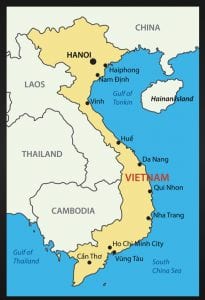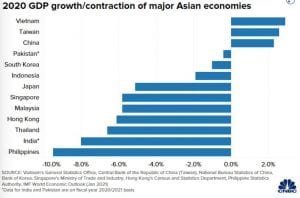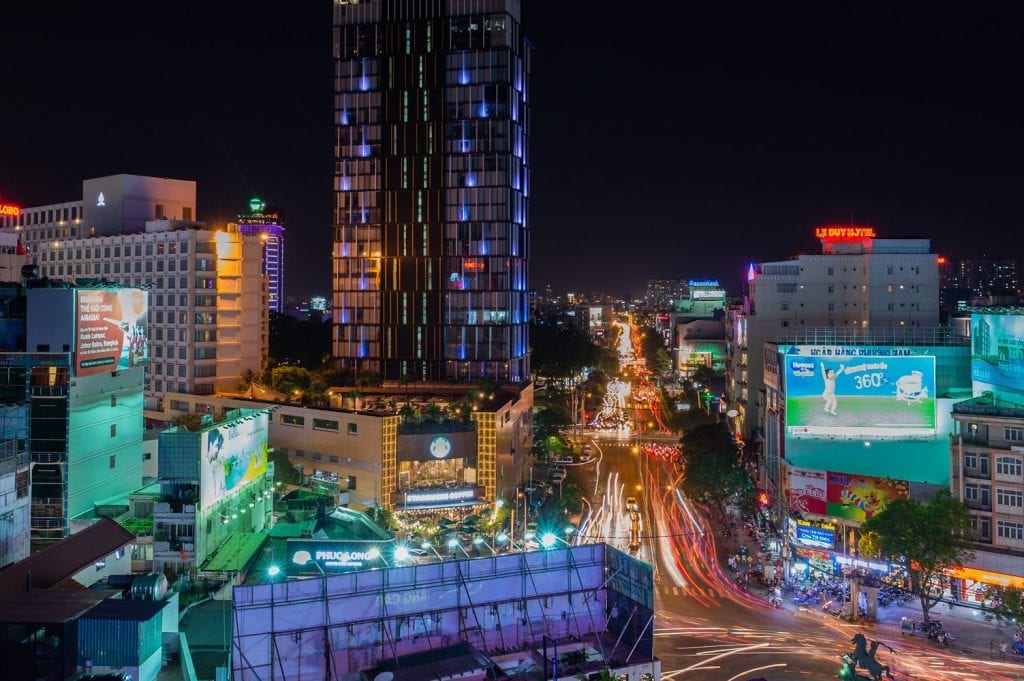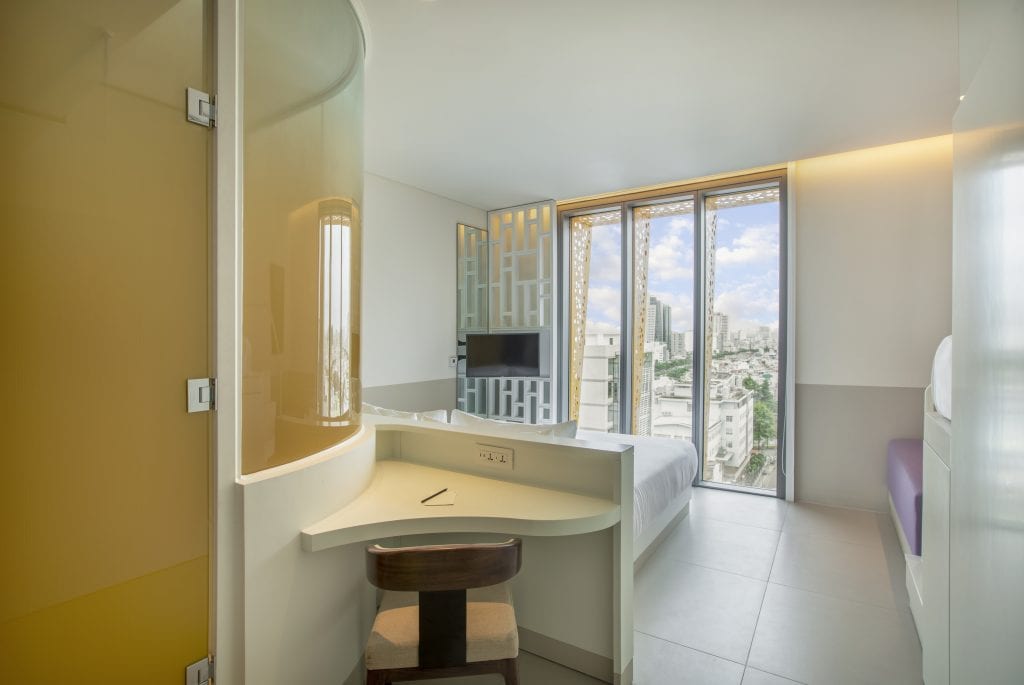Skift Take
A new flare-up of Covid-19 cases in northern Vietnam does not change the fact the country has a lot going for it and that its commercial capital in the south, Ho Chi Minh City, is a rising star in Asia.
 This series of stories will profile mid-sized and smaller cities across the globe, highlighting the depth of challenges from the pandemic to their travel economies, as hotels, airlines, airports, and tourism-related enterprises, especially small businesses, struggle to keep going.
This series of stories will profile mid-sized and smaller cities across the globe, highlighting the depth of challenges from the pandemic to their travel economies, as hotels, airlines, airports, and tourism-related enterprises, especially small businesses, struggle to keep going.
Think of Asia’s great city destinations that will be most resilient post-pandemic and the usual suspects such as Singapore, Bangkok, Hong Kong, Tokyo, Shanghai and Seoul invariably come to mind. But who’s going to be next?
Ho Chi Minh City, formerly Saigon, is emerging as a strong contender.
Construction of a second international airport for the city broke ground last month, a significant milestone as the existing Tan Son Nhat airport, which handles 40 million passengers annually, can be expanded by only so much due to its location within city limits. The new Long Thanh International Airport, located 40 kilometers to the east of Ho Chi Minh City, is expected to handle 25 million passengers a year in phase one and 100 million when completed in 2024.
A combined airport capacity of 150 million or more passengers annually is in line with the Vietnam government’s ambition to shape Ho Chi Minh City into a financial center in Asia by 2045. Authorities also envision a smart city by 2025, one that is services-oriented, with science and technology as pillars of the economy.
“Similar to China’s Greater Bay Area, Vietnam’s government envisions Ho Chi Minh City to become the central core of a southern megapolis. Vietnam wants to make the city an international gateway to the south, and other parts of the country, by taking advantage of its young workforce, fast growth and high urbanization rate,” said Marco Foerster, manager of International Business Advisory, Dezan Shira & Associates, a firm that helps foreign companies to settle and grow in Asia.
 Rahul Mittal, director at Cistri, a company that helps shape cities for a better future, sees direct parallels between Ho Chi Minh City and Bangkok as world-renowned destinations for tourism, commerce and, besides being the largest cities for their respective countries, are international gateway cities to the surrounding coastal destinations.
Rahul Mittal, director at Cistri, a company that helps shape cities for a better future, sees direct parallels between Ho Chi Minh City and Bangkok as world-renowned destinations for tourism, commerce and, besides being the largest cities for their respective countries, are international gateway cities to the surrounding coastal destinations.
“Ho Chi Minh City definitely has many of the key ingredients required for it to position itself as a regional financial hub,” said Mittal. “It has a relatively young population with an appetite for innovation and entrepreneurism. It possesses rich local heritage and culture, an attractive cityscape, and is well-known for its delicacies. All these are attractions for domestic and international talent, and the organizations that target such talent.”
The city has nine million people, nearly 10 percent of Vietnam’s population of 97 million. Forty percent of Vietnamese are under 25 years old.
Vietnam Rising
Vietnam has come out smelling like roses from a ghastly 2020 and it appears there is no stopping its economic pursuits in the long run, putting aside current problems such as containing a new outbreak in Covid-19 cases ahead of its most important holiday season Tet (or Chinese New Year) next week.
 Its accolades include the best country in the world after New Zealand in Covid-19 management, the highest GDP growth of all major Asian economies (beating even Taiwan and China), and a favorite alternative for companies looking to exit China in the face of the US-China trade war.
Its accolades include the best country in the world after New Zealand in Covid-19 management, the highest GDP growth of all major Asian economies (beating even Taiwan and China), and a favorite alternative for companies looking to exit China in the face of the US-China trade war.
All this augurs well for Ho Chi Minh City, which generates more than 20 percent of the country’s GDP. An Asia-Pacific Investor Intentions Survey 2021 by CBRE also shows Ho Chi Minh City in fifth spot for the first time as the most preferred city for cross-border investment, joining the ranks of mature cities Tokyo, Singapore, Seoul and Shanghai in order of preference. Unsurprisingly, Hong Kong fell out of the top 10.
Marriott International sees opportunities in Ho Chi Minh City. Last month, it signed a deal with Vietnam’s real estate firm Masterise Homes to build the largest branded residential project to-date in the world in Ho Chi Minh City, with close to 4,200 residential and “officetel” units under the JW Marriott and Marriott flags.
Indochina Kajima, a joint venture between Vietnam’s Indochina Capital Corp and Japan’s Kajima Corp, is developing the first modern Vietnamese hotel chain, Wink Hotels, which will debut a property next month in — where else — Ho Chi Minh City.
Increased investments and relocations spell a spike in inter- and intra-regional and international business travel, which should lead to more arrivals and spin-offs for leisure travel. In 2019, Ho Chi Minh City already welcomed half of Vietnam’s 18 million foreign visitors and close to 40 percent of the country’s whopping 85 million domestic trips.
Relocations
Relocations are happening even during the pandemic, said Foerster, who himself was relocated last month from Dezan Shira’s Shenzhen office to its Ho City Minh City office.
From what he sees, the top three countries of origin of foreign firms in China that have moved to Vietnam are the United States, Japan and Australia. The top three industries are electronics (consumer goods and white goods), furniture and textile. The top three sectors that are receiving foreign direct investments are manufacturing and processing, real estate and retail and wholesale.
The other country that is most considered for relocation is India, followed by Indonesia and the Philippines.
“Despite a difficult 2020, we have seen increased year-on-year interest in investing in Vietnam and opened our third office last year [in Danang, the other existing office being in Hanoi]. In the past three years, movements out of China into Vietnam have accelerated drastically. Other than traditional factors such as lower labor costs, proximity to China, vast sea and port access, and more Internet freedom, foreign corporations that are or were in China have been convinced, and oftentimes urged, to leave China for a number of reasons,” said Foerster.
The chief reason is the U.S.-China trade war, and companies seem willing to forget that Vietnam is another one-party communist state, enticed as they are by its heady mix of free trade agreements.
Another reason why many foreign businesses have closed in China last year is the near-impossibility of foreign resident permit holders who got stuck abroad to return to China due to restrictions. Vietnam, on the other hand, has taken a different approach, Foerster noted. Although it’s similarly strict on safety and quarantine measures as China, it has allowed foreigners and students to enter special expert visas, he said.
Ho Chi Minh City or Hanoi?
Hanoi in the north remains the political center, although the capital city, along with its nearby harbor city Hai Phong, is also being developed at a rapid pace and remains valuable due to its proximity to China.
But Ho Chi Minh City as the commercial capital gets a higher number of international arrivals, is a vibrant metropolis, while the Hanoi-Ho Chi Minh is the world’s second busiest domestic route with 1.02 million scheduled seats as of January, just a bit behind from South Korea’s Jeju-Gimpo (1.07 million seats), according to OAG data.
All good reasons for Wink Hotels to stake its first flag in Ho Chi Minh City. “I [and at least six of his executives] fly to Saigon every single week without fail. It’s typical, most of us live in Hanoi but go to the big city to make money,” said Michael Piro, Wink Hotels CEO and Indochina Capital chief operating officer.
Wink Hotels marks a shift by Indochina Capital to focus more on Vietnam’s domestic travel market which has not only grown exponentially but is driven by a younger and savvier generation that wants a modern, quality product at affordable prices. There’s this gap as 75 percent of the market in Vietnam comprises mom-and-pop unbranded accommodations, said Piro.
In the past 10-15 years, the firm has built projects such as the Four Seasons Nam Hai, Six Senses Con Dao and Hyatt Regency Danang to pull in the international market and showcase the beauty of Vietnam. “Now, it’s about how we can the same thing for the domestic market, creating a product that has the same level of details and care that we’ve brought to a $1,000 room night experience but for much less,” said Piro.
The new chain is targeting a pipeline of 20 hotels throughout Vietnam in the next five years. Rates won’t be more than $100 depending on the location.
The first Wink Hotel Saigon Centre has 237 rooms sporting chic Vietnamese design, comforts like power shower, premium bedlinen and high-speed Internet, and new ideas such as bringing Vietnam street food on Wink Carts for quick breakfasts and lunches. Coincidentally, it is built for a post-Covid world as it’s mostly contactless and cashless (the preferred method of payment in Vietnam). Guests do self check-in and the room card is also a top-up card which they can use to do laundry, buy snacks in vending machines and make other payments within the hotel.
Piro admits it will be a tough opening due to current conditions but “we might as well get started, practice and iron out any kinks, besides we’re in this for the long term.” And while international travel is still non-existent, there is still “quite a heavy flow” of domestic traffic between Hanoi and Ho Chi Minh City, he said.
The city’s tourism department at the start of the year announced a goal of 33 million domestic tourists for 2021 if Covid-19 is under control at home and nine million international arrivals if international flights resumed. Those numbers are close to what the city achieved pre-pandemic in 2019 and looks overly optimistic given the new bout of cases that Vietnam has to douse.
Ken Atkinson, executive chairman, Grant Thornton Vietnam, does not expect to see Vietnam reopening to international arrivals this year. But once restrictions are lifted, it’s going to be a flood gate, he said.
“We are going to see massive pent-up demand creating probably a few months of record inbound numbers. We will see the trends that were happening prior to Covid-19 — January 2020 for example was a record month for Vietnam by a long shot, 30 percent up; we’ll see those kinds of numbers again,” he said.
Vietnam was on its way to achieve 20 million international arrivals in 2020, from 18 million in 2019, but of course Covid-19 derailed that milestone.
Look to Singapore
Massive investments in real estate, manufacturing and mass production however are a double-edged sword, causing pollution levels to rise to hazardous levels in both Hanoi and Ho Chi Minh City, as seen in China a decade ago. To be a future city, keeping them clean is top priority, what’s more after Covid-19, said Foerster.
Asked what advice Citris has for Ho Chi Minh City in shaping the city for a better future, Mittal said, “The planners and policymakers should take a leaf out of Singapore’s playbook and think strategically and long term in planning its growth and development. This will not only lead to a high quality of life for the residents but allow space to accommodate future market trends.
“Investments in public infrastructure, especially public transit and high-quality public housing, should be a priority. Lastly, urban development shouldn’t come at the cost of local heritage and culture. Here again, cities like Singapore can provide a good reference in balancing the old and the new while incorporating smart city concepts throughout.”
A down time, as Wink shows, is the best time to start.
The Daily Newsletter
Our daily coverage of the global travel industry. Written by editors and analysts from across Skift’s brands.
Have a confidential tip for Skift? Get in touch
Tags: second city survival diaries, vietnam
Photo credit: Ho Chi Minh City: Asia's next financial center in the making. www.mroosfotografie.nl / www.mroosfotografie.nl on VisualHunt / CC BY-NC-SA">Visual Hunt

